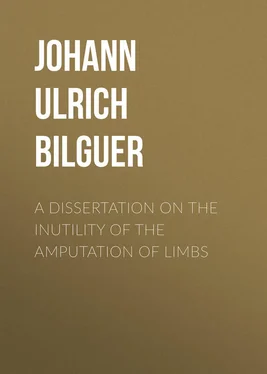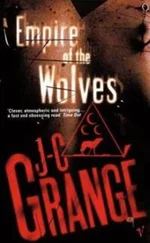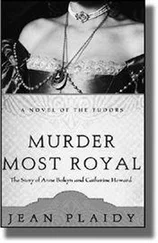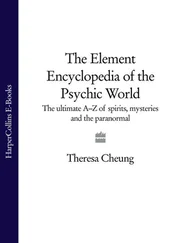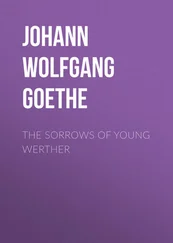Johann Bilguer - A dissertation on the inutility of the amputation of limbs
Здесь есть возможность читать онлайн «Johann Bilguer - A dissertation on the inutility of the amputation of limbs» — ознакомительный отрывок электронной книги совершенно бесплатно, а после прочтения отрывка купить полную версию. В некоторых случаях можно слушать аудио, скачать через торрент в формате fb2 и присутствует краткое содержание. Жанр: foreign_language, foreign_antique, foreign_prose, на английском языке. Описание произведения, (предисловие) а так же отзывы посетителей доступны на портале библиотеки ЛибКат.
- Название:A dissertation on the inutility of the amputation of limbs
- Автор:
- Жанр:
- Год:неизвестен
- ISBN:нет данных
- Рейтинг книги:4 / 5. Голосов: 1
-
Избранное:Добавить в избранное
- Отзывы:
-
Ваша оценка:
- 80
- 1
- 2
- 3
- 4
- 5
A dissertation on the inutility of the amputation of limbs: краткое содержание, описание и аннотация
Предлагаем к чтению аннотацию, описание, краткое содержание или предисловие (зависит от того, что написал сам автор книги «A dissertation on the inutility of the amputation of limbs»). Если вы не нашли необходимую информацию о книге — напишите в комментариях, мы постараемся отыскать её.
A dissertation on the inutility of the amputation of limbs — читать онлайн ознакомительный отрывок
Ниже представлен текст книги, разбитый по страницам. Система сохранения места последней прочитанной страницы, позволяет с удобством читать онлайн бесплатно книгу «A dissertation on the inutility of the amputation of limbs», без необходимости каждый раз заново искать на чём Вы остановились. Поставьте закладку, и сможете в любой момент перейти на страницу, на которой закончили чтение.
Интервал:
Закладка:
If, without any considerable inflammation preceding, a part is found mortified, or a beginning mortification appears attended with a swelling, which frequently happens to dropsical people, to those afflicted with œdematous tumours, and to aged persons, and whenever the ailment proceeds from a defect rather than an excess of the vital motions; the following fomentations are more proper.
1. Take of water germander, wormwood, southernwood, rue, of each two handfulls; chamomile flowers, one handfull: Boil them together, and to two pints of the strained liquor add four ounces of treacle spirit, two ounces of venice soap, and half an ounce or even an ounce of sal gem.
2. Take of water germander, wormwood, feverfew, of each two handfulls; of mint and southernwood, of each a handfull: Boil them together in oxycrate, so as to have four pints of the strained liquor, to which may be added half an ounce of sal gem, and afterwards from two to four ounces of treacle spirit.
3. Take of martial ball 9 9 As the composition of the martial ball may not be generally known, I shall describe it in this place: Take of filings of iron one part; white tartar two parts: Let them be reduced to a fine powder, and put into a matrass with as much French brandy as will swim about an inch above the powder; exhale to dryness, either in the heat of the sun or in that of a water bath. Pour fresh brandy upon the remainder, and evaporate them in this manner several times successively, till the mass appears resinous; then form it into balls nearly of the bigness of an egg. I do not exactly know what quantity Mr. Bilguer means by sextarius ; that measure, among the ancients, contained twenty four ounces, but here I believe it denotes somewhat less. If we suppose it to be about a pint, the medicine will be extremely good.
two ounces, sal ammoniac one ounce; dissolve them in about eight pints of spring water, and add two pints of rectified spirit of wine.
4. Take of crude alum, and white vitriol, each two ounces and two drams; lytharge of silver and myrrh, each an ounce; Aleppo galls, two ounces; juniper and bay berries, each an ounce; savin and rue, each two pugils; oak leaves, a handfull and a half; verdegris, half an ounce; camphor, two drams; calamin, six drams 10 10 This composition is commonly called species pro decocto nigro , or the species for the black decoction.
. After having mixed and reduced all these ingredients to powder, let two ounces of the composition be boiled with four pints of water, or with two of water and two of vinegar.
The following embrocations applied to parts already mortified, will stop the further progress of the mortification; where it is just beginning they will prevent it, and will also help nature to separate the dead parts from the sound.
1. Spirit of wine, three ounces; myrrh and aloes powdered, of each half an ounce; Ægyptian ointment, three drams 11 11 In using the external vulnerary medicines, in which aloes is an ingredient, it must be remembered, what Mr. Bilguer remarks in another place, that they often prove purgative.
.
2. Vinous decoction of scordium, twelve ounces; vinegar of rue and of roses, of each four ounces; spirit of treacle, three ounces; and one ounce of sal ammoniac.
3. Lime water, four pints; treacle spirit, or that of feverfew, two pints; white wine vinegar, one pint; elixir proprietatis, six ounces; Ægyptian ointment, two ounces.
4. Decoction of elder flowers, six ounces; wine, eight ounces; vinegar, camphorated spirit of wine, treacle spirit, or that of feverfew, each two ounces; spirit of salt, two drams.
Lastly, in order to soften the parts, separate the sloughs, and promote suppuration, the following application may be used.
Water germander, two handfulls; mallows and marshmallows, each a handfull; flower of linseed, three ounces; Venice soap and sal ammoniac, of each two ounces; linseed oil, an ounce. Let these ingredients be boiled together, in vinegar and water, to the consistence of a poultice.
It may be in general observed with regard to fomentations, that such as are emollient are serviceable, when hard dry crusts prevent a discharge; those which abound with acid, when there is a considerable degree of putrefaction; and, lastly, those which are spirituous, saline or strengthening, are most proper when swellings are flabby, and the body abounds with aqueous humours.
SECT. XIV
The diligent use of these fomentations will alter, in the space of twelve hours, the condition of gangrened wounds for the better; at the end of which, the lint and vulnerary powder, with which they were filled, may be removed, and at the same time, all the detached pieces of mortified flesh may be extracted, and the same dressings ( § X SECT. X When the incisions are made, if the neighbouring parts appear somewhat tainted, we must, by gentle compression, squeeze out the corrupted humour which may harbour there, and wipe it off with a bit of soft linnen rag. Afterwards, whether it may have been necessary to extract, either with the fingers, a scalpel, or with the instrument called a myrtle leaf 7 7 See Dionis's surgery, page 18. 4th edition. , any bony splinters too much detached from the substance of the bone itself to hope for a re-union, a circumstance which often requires a considerable dilatation of the fleshy parts; or whether the bones appear carious, or spoiled in any other shape; or, lastly, whether we may have been obliged to make deep incisions, even to the bone: In all these cases, we must at first employ such external applications as are proper for the bones, and for the soft parts that have a tendency to mortification, although they may have discharged a sufficient quantity of blood during these operations. The bone, whether the periosteum be sound or destroyed, must be dressed with the following medicine: Of frankincense, mastick, sarcocolla and myrrh finely pounded, true balsam of Peru, and genuine essential oil of cloves, of each equal parts; of balsam of Fioraventi, as much as may, in mixing all the ingredients over a very gentle fire, form a thin liniment ; which must be warmed when used, and which must be poured plentifully into the wounds I am speaking of, so that the bone may be well moistened therewith. This medicine is of service in all cases where the bone is affected. When the bone is covered with it, some dry lint may be laid over it, and the soft parts dressed by sprinkling upon this lint a powder composed of an ounce of myrrh finely pounded, half an ounce of sal ammoniac, camphor and nitre, each a dram . After the first layer of lint is thus covered, fresh lint must be applied, and again sprinkled with the powder, till in this manner the cavity of the wound is quite filled up with alternate layers of lint, and this vulnerary powder.
, XI SECT. XI If the bone is not affected, or the periosteum laid bare, the balsam or thin liniment may be omitted. And the dressings may only consist of the layers of dry lint and vulnerary powder applied alternately.
, XII SECT. XII Besides the dressings I have mentioned ( § X. SECT. X When the incisions are made, if the neighbouring parts appear somewhat tainted, we must, by gentle compression, squeeze out the corrupted humour which may harbour there, and wipe it off with a bit of soft linnen rag. Afterwards, whether it may have been necessary to extract, either with the fingers, a scalpel, or with the instrument called a myrtle leaf 7 7 See Dionis's surgery, page 18. 4th edition. , any bony splinters too much detached from the substance of the bone itself to hope for a re-union, a circumstance which often requires a considerable dilatation of the fleshy parts; or whether the bones appear carious, or spoiled in any other shape; or, lastly, whether we may have been obliged to make deep incisions, even to the bone: In all these cases, we must at first employ such external applications as are proper for the bones, and for the soft parts that have a tendency to mortification, although they may have discharged a sufficient quantity of blood during these operations. The bone, whether the periosteum be sound or destroyed, must be dressed with the following medicine: Of frankincense, mastick, sarcocolla and myrrh finely pounded, true balsam of Peru, and genuine essential oil of cloves, of each equal parts; of balsam of Fioraventi, as much as may, in mixing all the ingredients over a very gentle fire, form a thin liniment ; which must be warmed when used, and which must be poured plentifully into the wounds I am speaking of, so that the bone may be well moistened therewith. This medicine is of service in all cases where the bone is affected. When the bone is covered with it, some dry lint may be laid over it, and the soft parts dressed by sprinkling upon this lint a powder composed of an ounce of myrrh finely pounded, half an ounce of sal ammoniac, camphor and nitre, each a dram . After the first layer of lint is thus covered, fresh lint must be applied, and again sprinkled with the powder, till in this manner the cavity of the wound is quite filled up with alternate layers of lint, and this vulnerary powder. and § XI. SECT. XI If the bone is not affected, or the periosteum laid bare, the balsam or thin liniment may be omitted. And the dressings may only consist of the layers of dry lint and vulnerary powder applied alternately. ) for these kinds of wounds, we must likewise make slight scarifications upon the neighbouring parts, and sprinkle them with the powder; after this treatment, embrocate all the sores with oil of turpentine, and then lightly bandage up the whole with plain linnen cloth, which must be kept moistened, night and day, with warm fomentations.
.) applied, which must be renewed every twelve hours. The third or fourth dressing, the wound will discharge matter of a favourable aspect, so as to afford hopes of a cure: Then it will only be necessary to give the bark internally, and to dress the sore in the manner I shall mention by and bye. § XVI.
Интервал:
Закладка:
Похожие книги на «A dissertation on the inutility of the amputation of limbs»
Представляем Вашему вниманию похожие книги на «A dissertation on the inutility of the amputation of limbs» списком для выбора. Мы отобрали схожую по названию и смыслу литературу в надежде предоставить читателям больше вариантов отыскать новые, интересные, ещё непрочитанные произведения.
Обсуждение, отзывы о книге «A dissertation on the inutility of the amputation of limbs» и просто собственные мнения читателей. Оставьте ваши комментарии, напишите, что Вы думаете о произведении, его смысле или главных героях. Укажите что конкретно понравилось, а что нет, и почему Вы так считаете.
